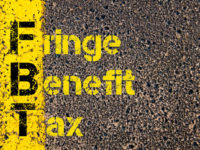Many small and micro businesses look to get the best out of their staff by providing benefits and perks over and above their normal salary and wages. Whilst that can be a great way to incentivise staff, there are potential tax consequences that need to be borne in mind.
If you provide benefits to your employees, you could find that your business is liable to pay Fringe Benefits Tax (FBT). This is a tax paid by the employer – not the employee – on the taxable value of certain benefits paid to employees, including benefits provided to the family of employees or to associates (such as friends) of employees.
Examples of Fringe Benefits
Amongst the most commonly provided benefits that can give rise to FBT are:
- Providing a car for your employee that can be used for private purposes
- Providing free or subsidised car parking for your employees
- Providing your staff with “entertainment”, such as meals, drinks, sporting or leisure pursuits, theatre tickets, and holidays
- Either reimbursing an employee for private expenses or paying for such expenses directly to a third party (for instance, paying your employee’s domestic utility bills)
- Giving your employee a loan and charging no interest or a reduced rate of interest
- Providing accommodation to an employee rent-free or at a reduced rent
How is FBT calculated?
FBT is payable based on the grossed-up ‘taxable value’ of the benefit provided. This grossing up process is intended to reflect the gross salary employees would have to earn to buy the benefits you’re providing after paying tax. Fringe benefits are split into Type 1 and Type 2 benefits and there are different gross-up rates for each.
The grossed-up value of the fringe benefit is then multiplied by the current FBT rate (47 per cent ) to give the actual liability.
The actual calculation can be complex and is best done by your accountant.
Can my business reduce its FBT liability?
It’s possible to reduce your FBT liability, or even eliminate it altogether, by getting your employee to make a cash contribution towards the cost of the benefit provided to them. Each dollar that they pay towards the provision of the benefit reduces the taxable value of the benefit by the same amount.
Are any benefits FBT-free?
Some benefits are free from FBT, such as the provision by a small business of tools or electronic devices (such as laptops) that are mainly used for work purposes.
So-called ‘minor benefits’ are also FBT-free. A minor benefit is one with a notional taxable value of less than $300 and could include things like the annual staff Christmas party, provided the cost per head is less than $300.
There are a number of generous concessions and exemptions available to certain not-for-profit organisations like charities, hospitals and religious institutions.
How does my business report and pay FBT?
The FBT year runs from 1 April to 31 March so now is the time to determine if your business needs to register for and pay FBT.
If you provide benefits to your employees and think you might have an FBT liability, the first step you need to take is to register for FBT with the ATO. Your tax agent can help you with that process.
If you have provided fringe benefits for your employees, you must then lodge an FBT return by 21 May at the latest, though if you use a tax agent you may qualify for an extended deadline.
If you haven’t paid FBT before, or if the amount you had to pay for the previous year was less than $3000, you only make one payment for the year when you lodge your return. Otherwise, it is payable quarterly through your activity statements for the next FBT year.














